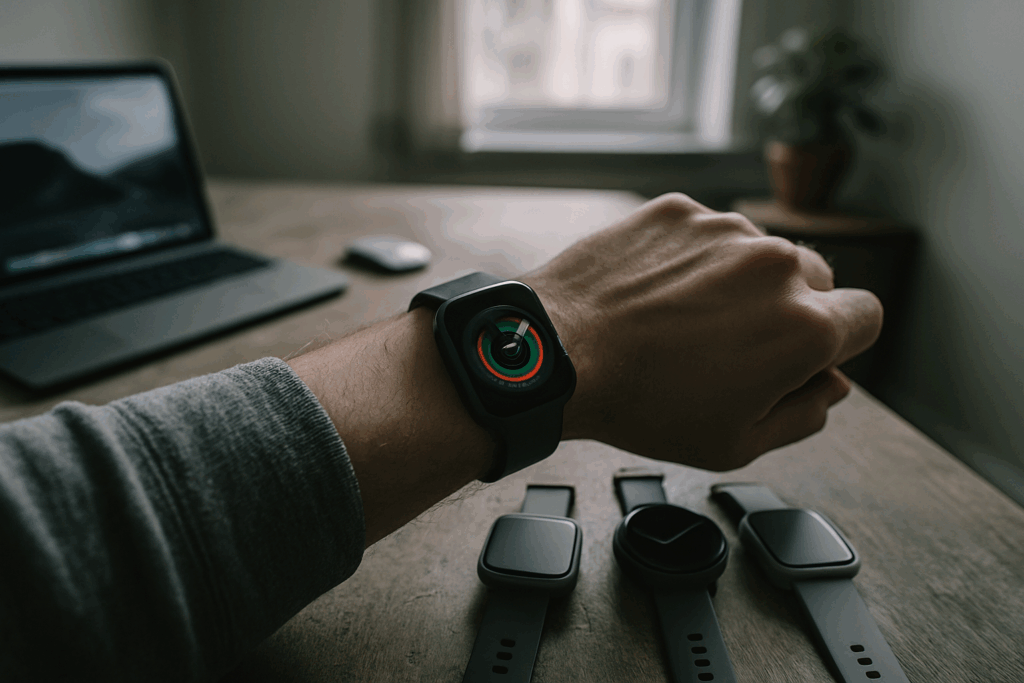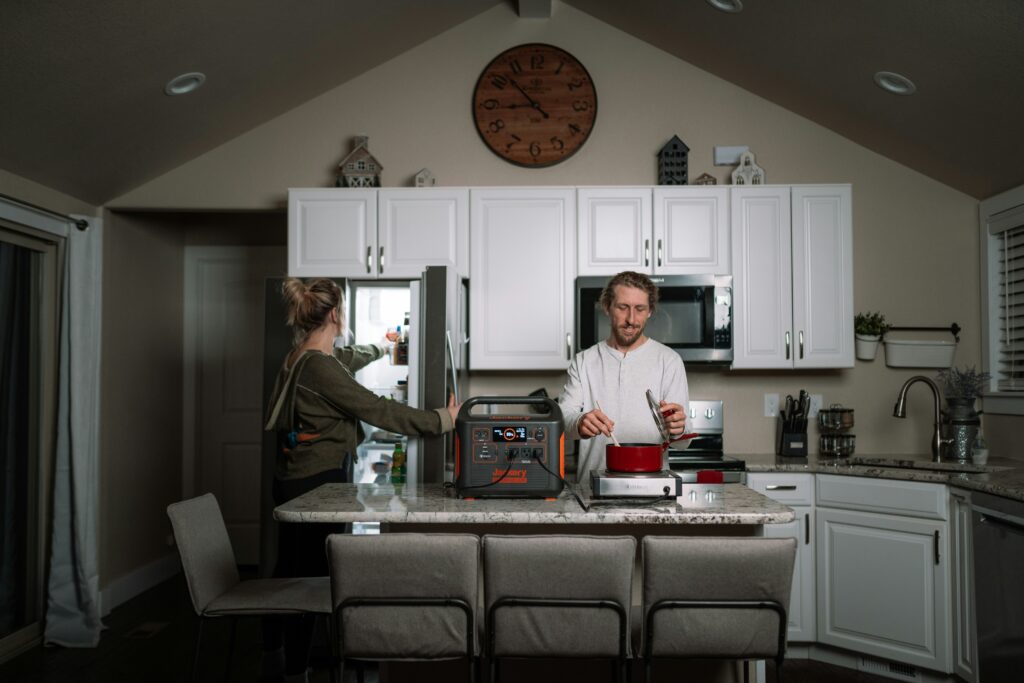Smart homes aren’t a glimpse of the future anymore. They’re here, baked into new builds and creeping into older spaces through retrofits and affordable devices. What used to be high-end—voice-controlled thermostats, smart lighting, or real-time energy usage tracking—is now standard in more homes than not.
Affordability plays a huge role. You don’t need a $10,000 system installed by specialists. Mass-market products like Wi-Fi plugs, smart bulbs, and security cams are plug-and-play. They’re saving people time, cutting energy bills, and adding convenience without much setup.
But not all automation is worth your money. A fridge that tells you when you’re low on eggs? Gimmick. Smart blinds that adjust based on natural light and room temperature? That’s the kind of quiet, behind-the-scenes tech that actually improves life. The key is function over flash. If the gadget solves an actual problem without making you think twice, it belongs. If it needs an app just to open a cabinet, pass.
Smart homes are getting smarter. Just make sure yours stays useful.
Smart homes are no longer just a gimmick—they’re practical, efficient, and surprisingly easy to set up. Smart speakers with built-in hubs like the Amazon Echo or Google Nest Hub now serve as the command center for everything. Ask for a weather update, start a playlist, or dim the lights without lifting a finger.
Speaking of lights, smart lighting systems have leveled up. You can tweak brightness, change color temperature, or schedule it all through an app—or just use your voice. It’s convenience with zero fuss.
Smart TVs and universal remotes are also getting smarter. They start learning what you watch, when you watch it, and how you like your settings—then adjust automatically. Instead of juggling settings for Friday night movies or early morning news, your devices just know.
To tie it all together, setting routines is your best move. Try automating your “movie night” by syncing lighting, soundbars, and TV input to one voice command. Or schedule a “wind-down” mode that drops the lights and queues up a mellow playlist around bedtime. The more you automate, the less you fiddle—and that’s the point.
Smart Kitchens Are Finally (Mostly) Worth a Look
Voice-enabled smart displays are no gimmick anymore. Being able to pull up recipes or watch a vlogger’s step-by-step while your hands are covered in dough? Useful. These displays now offer legit help in the kitchen, combining recipe guidance with video playback so you can cook and follow along without breaking rhythm.
Then there are the appliances. Smart ovens and fridges are still a mixed bag. Features like remote preheating or internal cameras sound cool, but they only pay off if you cook often or manage a big household. The tech is getting better—less glitchy, more intuitive—but if you’re not a frequent home chef, the price tag can still feel like a stretch.
Still, there’s real momentum in the sensor space. Newer devices monitor everything from internal food temperatures to energy usage in real time. Useful if you’re trying to waste less, save power, or stress less about food safety. These aren’t just upsells—they’re tools that smart vloggers and lifestyle creators are starting to highlight for good reason.
And yes, integration is finally smoother. HomeKit, Alexa, Google Assistant—they all play nicer than they used to. Your oven can talk to your speaker which can set your lights which can ping your phone. Useful if you automate wisely. Overkill if you don’t.
Bottom line: smart kitchen tech is no longer tomorrow’s maybe. It’s here, and depending on how you cook—or vlog—it might actually be worth it.
Smart sleep tech isn’t just a luxury anymore—it’s inching toward necessity for anyone chasing better rest. Leading the charge are smart lighting systems programmed to ease you into sleep and wake you up gently. They mimic natural cycles, shifting from warm, low light at night to brighter tones come morning. No more blinding overhead lights or jarring wakeups.
Then there’s climate control. Whether it’s a smart thermostat that cools your room just before bed or a mattress pad that regulates temperature by zone, maintaining the right sleep environment is easier than ever. Hot sleepers, rejoice.
Connected alarm clocks are also getting smarter. The best ones double as white noise machines, sunrise simulating lamps, and even sleep trackers. And speaking of tracking, some wearables and bedside systems are now accurate enough to give real insights—while others are just good enough to nudge habits in the right direction. Either way, sleep tech is becoming less about the gadget and more about the outcome: better shut-eye with fewer guesses.
The Smarter Bathroom is Finally Worth Talking About
If you’re vlogging from your bathroom in 2024, it might feel more like stepping into a control room than your routine rinse-and-repeat space. Tech isn’t just hitting the kitchen anymore—it’s quietly reshaping how we start and end our days.
Smart mirrors now offer more than a reflection. Think built-in weather updates, news headlines, and yes, skincare tips based on real-time analysis. Some can even recommend sunscreen types based on current UV levels. If you vlog health, wellness, or beauty, this tool isn’t a gimmick—it streamlines your setup and fuels content ideas.
Water usage monitors and smart showers are building momentum too, especially in sustainability circles. Vloggers living small or off-grid will find the tracking features share-worthy, while eco-conscious creators can leverage the data for audience engagement on topics people care about.
Touchless faucets aren’t new, but what’s changing is precision. These updated models give you control down to a single degree, with presets for washing hands, face, or filling a baby bottle. If your content lives at the intersection of lifestyle and family, this kind of quiet tech is low-key impressive.
And voice control in the bathroom? It’s hit or miss. Wet spaces still present challenges with echo, steam, and inconsistent response. It works best when paired with tactile backup—physical buttons or a good app. If you’re filming in a steamy, echo-heavy room, plan to edit out the misfires. But when voice works, it shaves minutes off the routine—something vloggers appreciate when filming in tight windows.
In short: the bathroom just became a smarter, more content-ready space. You don’t need everything at once—but a few well-placed upgrades can elevate both your daily rituals and your on-camera credibility.
Smart Tech That’s Actually Making Vlogging Easier
Not all gadgets are about flash. Some just make the day flow better. Smart plugs, for example, let vloggers track energy use from lighting gear and chargers, and shut everything off automatically when recording wraps. It’s a low-key win for your electric bill and your gear setup.
Automated blinds and lighting systems are also gaining ground, giving creators better control over their recording environment with minimal hassle. Light too harsh? Noise outside? One tap and it’s fixed.
For those juggling collabs, meetings, and edits, noise-canceling smart speakers are a game changer. They block out distractions without needing bulky headsets, so you can actually hear what’s being said—and say it back—without fiddling with settings.
Calendar and to-do app integration is the backbone of staying organized. When your smart home setup syncs with your shoot schedule, reminders and task batching feel less like a chore. It’s the kind of invisible productivity boost that adds up fast.
Bonus: If you’re into immersive workflows or planning to shoot VR content, don’t miss our hands-on review of the latest VR headsets.
Smart home security gear is leaning harder into simplicity, privacy, and reliability. The top-rated cameras and doorbells now come with sharper night vision, faster alerts, and smarter motion detection. They recognize everything from a dog to a delivery driver, so you get less noise and more clarity. Brands like Arlo, Eufy, and Nest are dominating this space—offering solid build quality and seamless app experiences.
Privacy finally feels like more than just marketing. The best systems in 2024 include end-to-end encryption and on-device processing, meaning your footage doesn’t get shipped off to some mystery server. For vloggers, this matters—especially when you’re balancing public content creation with private home life.
Then there are smart locks and remote access features. Battery life is up. Response times are faster. You can see who’s at the door and unlock it from anywhere, which means fewer missed deliveries and no surprise guests slipping in unannounced.
Notifications now do what they should: alert you when needed, stay quiet when not. With adjustable zones and frequency parameters, you’re not stuck babysitting your phone all day. It’s smart security that gets out of your way until it’s time to step in.
Smart automation isn’t about flashy gear or chasing trends. It’s about cutting the noise and freeing up focus. Don’t sink money into the newest tool just because it promises more buzz. Start by automating the stuff that slows you down—upload scheduling, captioning, quick edits, or even idea generation. The goal is to smooth out your workflow, not complicate it.
Compatibility beats novelty. A tool might be cool today but useless if it doesn’t play well with your current setup—or worse, if it puts your content or audience privacy at risk. Stick to platforms and software that integrate easily, protect your data, and don’t try to reinvent your process from scratch.
Build with intention. Start with a single, reliable platform—a place where you plan and manage content across all your channels—and then add only what you need. Growth should feel like momentum, not clutter.
Good automation stays out of the way. It supports your voice without stealing it. It makes creating simpler, not colder.


 Isaac Lesureneric is a tech author at gfxrobotection focusing on digital security, automation, and emerging technologies. He shares clear, practical insights to help readers understand and adapt to the rapidly changing tech world.
Isaac Lesureneric is a tech author at gfxrobotection focusing on digital security, automation, and emerging technologies. He shares clear, practical insights to help readers understand and adapt to the rapidly changing tech world.

